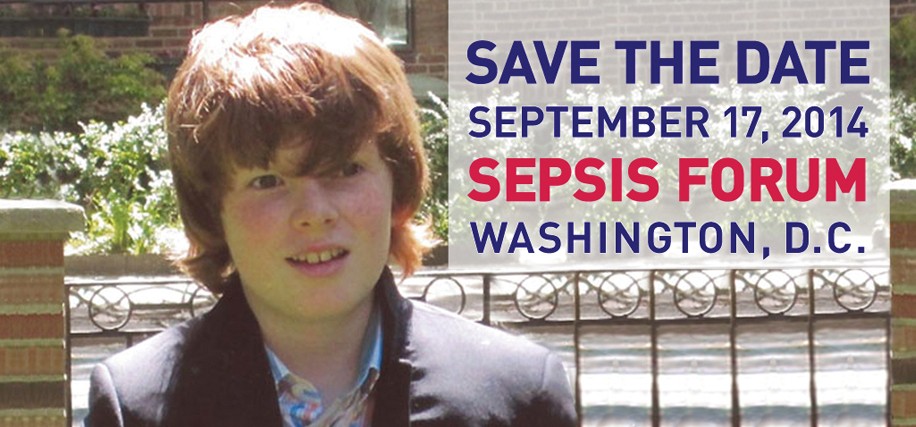The Staunton family suffered unbelievable loss when their 12-year-old son was mis-diagnosed and died from sepsis, an infection that could easily have been treated with antibiotics, but they have turned that loss into a medical and public awareness in a campaign that has already saved countless lives and achieved many milestones.
Dr. Thomas Frieden, director of the Centers for Disease Control, and New York Senator Charles E. Schumer (D) will both address the inaugural National Sepsis Forum in Washington, D.C., on September 17.
The forum, entitled “Defeating the Killer,” is jointly organized by the Rory Staunton Foundation and Long Island’s North Shore- LIJ Health System.
Orlaith and Ciaran Staunton established the Rory Staunton Foundation to increase awareness and detection of sepsis after the death of their 12-year-old son Rory who died from undiagnosed and untreated sepsis on April 1, 2012.
“Our son Rory should not have died and no other parent should suffer like we do,” says Rory’s mother Orlaith.
The announcement of the conference coincides with new research published in the Journal of the American Medical Association which suggests that sepsis is responsible for more deaths than previously suspected.
The article, “Hospital Deaths in Patients With Sepsis From 2 Independent Cohorts,” reports that “sepsis contributed to 1 in every 2 to 3 deaths, and most of these patients had sepsis at admission.” The research authors also say that “patients with initially less severe sepsis made up the majority of sepsis deaths.”
Ciaran and Orlaith say the article bolsters the Foundation’s argument that sepsis deaths can be prevented if recognized earlier. They say the JAMA article reinforces their campaign for more urgent and more aggressive detection of sepsis.
“Sepsis kills because we don’t administer IV fluids and antibiotics when people show up in the emergency room,” says Orlaith. “We need to identify sepsis in its early stages. There has to be better identification of sepsis, better diagnoses and better treatment. Sepsis needs to be caught early and caught aggressively.”
The conference will focus on new ideas for a fresh approach in the diagnosis and treatment of sepsis. Orlaith describes the current system as “failing.” “The current system is broken and the conference will explore new and better options for the care and treatment of sepsis,” she says. “We have to change the dynamic so that medical professionals rule out sepsis first. ‘Think sepsis first, not last.’”
Kevin J. Tracey, M.D., President & Chief Executive Officer at The Feinstein Institute for Medical Research, who will speak at the forum, told The New York Times, “We are with sepsis where we were with heart attack in the early 1980s.
“If you don’t think of it as a possibility, this story can happen again and again. This case could change the world,” Dr. Tracey, one of our honorees in this issue, continued.
The Washington program will also include a dedication to children who have died from sepsis. “We couldn’t host this forum without paying tribute to our son Rory and all the other children who have died from this devastating infection,” says Orlaith.
The Foundation has made significant progress in its efforts to create greater awareness about sepsis since it was established in the wake of Rory’s death.
Milestones
The Foundation set up a meeting with the Centers for Disease Control in Atlanta in 2014 to request the CDC to set the standard on sepsis awareness. CDC director Dr. Thomas Frieden promised change after the meeting and first steps included the creation of a CDC-sponsored website on sepsis. The CDC website had not previously listed sepsis.
New York Governor Andrew Cuomo signed “Rory’s Regulations” in New York State in 2013 for new protocols at medical institutions concerning the diagnosis and treatment of sepsis. The regulations are expected to save an estimated 8,000 lives in the state. The regulations include a Parents Bill of Rights which calls for improved communication between staff, parents and patients in pediatric emergency rooms.
The Foundation organized and testified before the first ever U.S. Senate Hearing on Sepsis, held by the Senate Committee on Health, Education, Labor and Pensions (HELP) on September 24, 2013, in which Chairman Tom Harkin was moved to note that Rory’s Regulations were needed in every state.
Johns Hopkins University Medical Errors in Diagnostics Conference featured an abstract of the events leading to the unnecessary death of Rory Staunton, putting sepsis diagnosis and treatment in the spotlight. Ciaran Staunton spoke before the conference of physicians, bringing the causes of Rory’s death to a new audience and urged them to “Think Sepsis.”
Ciaran was invited to give the keynote address at the Symposium on Sepsis held in Berlin, Germany after the Foundation joined forces with the World Sepsis Alliance to collaborate on greater global awareness.
Rory’s story has been featured in more than 500 media outlets internationally and Orlaith and Ciaran Staunton have appeared on the “Today Show,” “Dr. Oz,” and many other local and international TV and radio shows to publicly call on people to “think sepsis.” The family also provided Rory’s personal medical records to The New York Times to help highlight the issue.
Rory’s personal hero Captain Sully Sullenberger, the pilot who safely landed US Airways flight 1549 in the Hudson River on January 15, 2009, has also lent his voice to the Foundation.
Kelly Fincham, an assistant professor of journalism at Hofstra University, volunteers with the Rory Staunton Foundation.
Turning Grief into Action: The Case of Rory Staunton


Leave a Reply